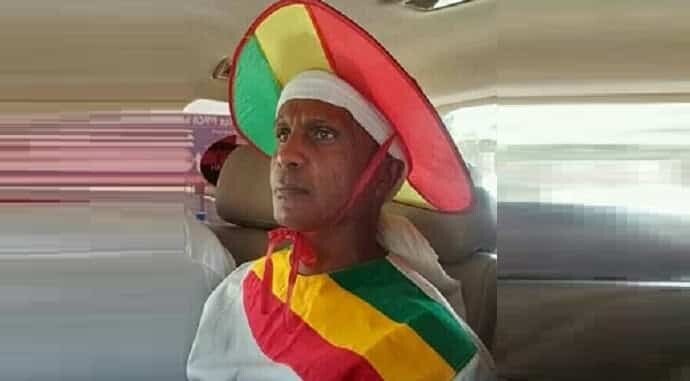Tsegaye Tegenu, PhD
2023-11-27
A grand narrative, also known as a meta-narrative, is a term used in philosophy, social theory, and literary criticism to describe a comprehensive and all-encompassing story or interpretation of history, society, or human existence. It’s a master narrative that seeks to provide a unified and overarching explanation for various events, developments, or phenomena.
In a recent televised speech to party and government officials, Ethiopian Prime Minister Abiy Ahmed introduced what he referred to as a “Grand Narrative.” This narrative, as outlined by the Prime Minister, places a spotlight on the crucial role of stories and narratives in molding a nation. He underscored that the purpose of this narrative is to promote positive engagement and cultivate a collective national identity. According to him, it serves as a unifying force, enabling the nation to stand together and pave the way for prosperity. The Grand Narrative is positioned as the cornerstone for building a resilient and united Ethiopia.
Critics argued that the decision was politically driven and intended to regain lost credibility. Some say that the production of a grand narrative should be grounded in an honest and accurate understanding of history. Twisting or distorting historical facts can undermine the credibility and authenticity of the narrative, leading to potential negative consequences. They contended that constructing a grand narrative by reshaping historical events is inherently problematic. The question arises: does the nation require a grand narrative that transcends ideology, religion, and politics? If the answer is affirmative, what framework should underpin it?
Before delving into this inquiry, let’s reflect on historical grand narratives that have documented the evolution of Ethiopian society and politics across centuries. The first grand narrative refers to the Solomonic dynasty which ruled Ethiopia from the thirteenth centuries onwards. The narrative traces the lineage of monarchies back to King Solomon of ancient Israel and the Queen of Sheba. This narrative has played a significant role in shaping the historical and cultural identity of Ethiopia. For details see
–Abir, Mordechai (2013). Ethiopia and the Red Sea: The Rise and Decline of the Solomonic Dynasty and Muslim European Rivalry in the Region.
–Taddesse Tamrat (1972), Church and State in Ethiopia (1270–1527). Oxford.
The second grand narrative refers to the Era of Princes (Zamana Masafent) in the period between seventeenth century to the rise of Emperor Tewedros. Chroniclers used the term to characterize a period in Ethiopian history which resembled like that of the Old Testament judges. During this period, the Were Seh lords ruled the country in the name of the Solomonic dynasty.
The weaking of the kings’ power was a result of the events of the major population migration and resettlement of the 16th and the first half of the 17th centuries. In the historical writings this event was referred as the Wars of Ahmed Gran which lasted from 1527-1541, and the Oromo resettlement into central and northern Ethiopia starting from the early 1530s continuing up to the beginning of the 17th century. For details see Merid Wolde Aregay (1971) “Southern Ethiopia and the Christian Kingdom, 1508-1708, with Special Reference to the Gala Migrations and their Consequences”, Ph.D. thesis, University of London.
The third grand narrative refers to the survival of Ethiopian independence during the period of intense European imperialism in the late 19th and early 20th centuries. Several factors contributed to Ethiopia’s ability to preserve its independence. For details see
Sven Rubenson (1976), The Survival of Ethiopian Independence. London.
Raymond Jonas, The Battle of Adwa African Victory in the Age of Empire
Tsegaye Tegenu (1996), The Evolution of Ethiopian Absolutism: The Genesis and the Making of the Fiscal Military State, 1696-1913. Uppsala.
Harold G. Marcu (1975), The Life and Times of Menelik II: Ethiopia, 1844-1913. Oxford.
The fourth grand narratives refer to the modernization period of Hail Selassie. The Emperor had made a reform as regards administration, economy and social conditions. Improvements in the functions and responsibilities of the ministries that were created by Menelik in 1907; codification of the countries civil and criminal laws aimed to avoid arbitrary judgement and punishment by governors; printing press which facilitated and encouraged publications; financially, giving regulation to a credit system that abolished higher rent; establishment of a shareholder bank (Bank of Ethiopia); expansion of infrastructure such as road, an import of air plane and cars for transport; socially, establishment of hospital, schools and construction of electricity; on religion, the Ethiopian Orthodox Church for the first time elected her own patriarch (Abun), breaking thousand years of tradition of appointment by Coptic church of Egypt, thus asserting the sovereignty of the church; and, secularization policy through the formation of an independent central administration of the Ethiopian Church (the Office of Bet Khnet at Addis Ababa), thus separating the church from the state, and consequently his policy that religion is “the private affair of human beings”; abolishing of corvee labour (free exploitation of peasant labour for cultivation of governors lands, fencing his house, grinding his corn, etc.); modification of administrations, legal and fiscal systems; encouraging commercial and economic development; establishment of Haile Selassie I University and many secondary and primary education, etc. Externally, support for colonial subjugated people, founding of OAU, Non-Aliened Movement, to mention but few. For details see
Bahru Zewde (2002), A History of Modern Ethiopia, 1855–1991. Addis Ababa.
Messay Kebede (1998), Survival and Modernization, Ethiopia’s Enigmatic Present: A Philosophical Discourse
The fifth narrative differ in its scale and scopes of stories. I call this narrative petty narrative covering the period from 1974 to the present. Unlike the above four grand narratives, which provided overarching and all-encompassing stories about the country, the petty narratives of the post modernization period focus on the individual stories of revolution and national questions in the country.
One of the most notable revolutions occurred in 1974, leading to the overthrow of Emperor Haile Selassie and the establishment of the People’s Democratic Republic of Ethiopia under the Derg regime. For details see Gebru Tareke (2013), The Ethiopian Revolution.
The other petty narrative on national question refer to issues and challenges related to the identity, rights, and political representation of specific nationalities, ethnic, or cultural groups within the country. Ethiopia is a diverse country with a long history, and it has grappled with various national questions, particularly those related to ethnic, linguistic, and cultural diversity. Currently, we have petty narratives petty narratives focusing and dealing with particular aspects of ethnic groups.
Have petty narratives failed? Does Ethiopia need now a grand narrative that shape our understanding of the country. A grand narrative can provide a shared sense of identity and purpose for a community or nation. It helps in creating a cohesive understanding of who the people are, where they come from, and where they are heading. The question is what should be the source of grand narratives? Answering this question depends on the values, priorities, and goals of the Ethiopian society.
According to my assessment of the current economic situation of the country, eradication of poverty and the creation of a welfare state and society should be the source of the six grand narratives in Ethiopia. Such a narrative would emphasize societal values centered around social justice, equity, and the well-being of all citizens in the country. Eradication of poverty and the establishment of a welfare state, however requires a comprehensive roadmap that outlines specific goals, strategies, and actions. Do we have the specific details of such a roadmap?

















As always a well written article by Obbo Tsegaye Tegenu, PhD. The brother does not engage in divisive polemic. He stays clear of using terms like ‘Neftegna’ ‘Oromummaa’ and ‘Woyane’ as pejoratives as other intellectuals have it their routine. His articles are always loaded with references so we can learn. I hope and wish other intellectuals use his writings as a model. Using existing terms or coining up new ones as pejorative will not further the accord for others who are at work to bring people together to bring peace and stability for those beleaguered noble people.
Right on brother! Right on!!!
Blessing to you and your family.
Out of my keen interest in the topic of re-defining & reaching a consensus on a “Grand Narrative” for Ethiopia, I started reading this piece in earnest, so to speak!
But, but!
I couldn’t go further than the paragraph on “THE FIFTH NARRATIVE”, which states: “The fifth narrative differ in its scale and scopes of stories. I call this narrative petty narrative covering the period from 1974 to the present”…, pity, it starts from the usual narrow definition of “Ethiopia” a being a thing of only Kings of Christian Ethiopia from the North – simply a defunct rigidity of identifying Ethiopia that cost us so much so far!
We know, by this, the author is deliberately picky of literature that is fit for his self-congratulatory conviction – while there are ample out there by reputed & industrious Ethiopian authors.
ዉሃ ቢወቅጡት እንቦጭ!